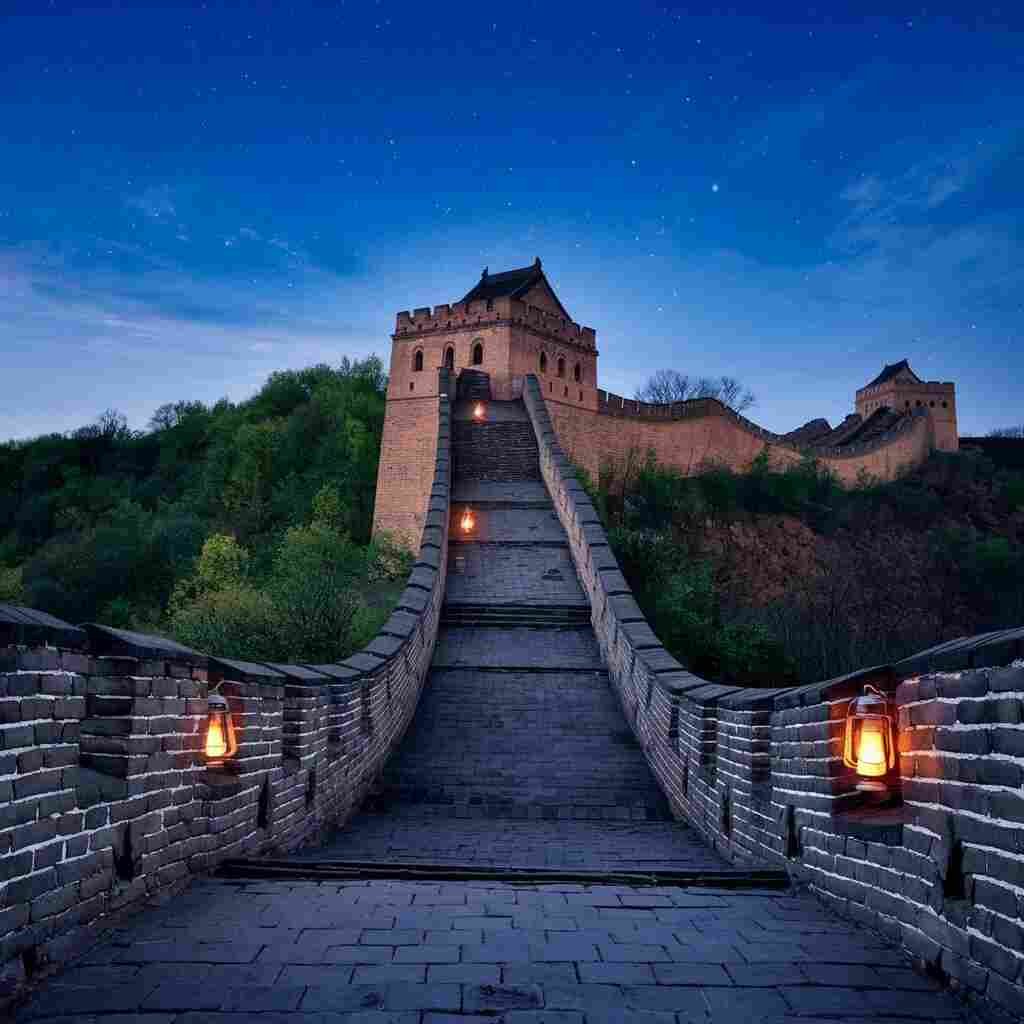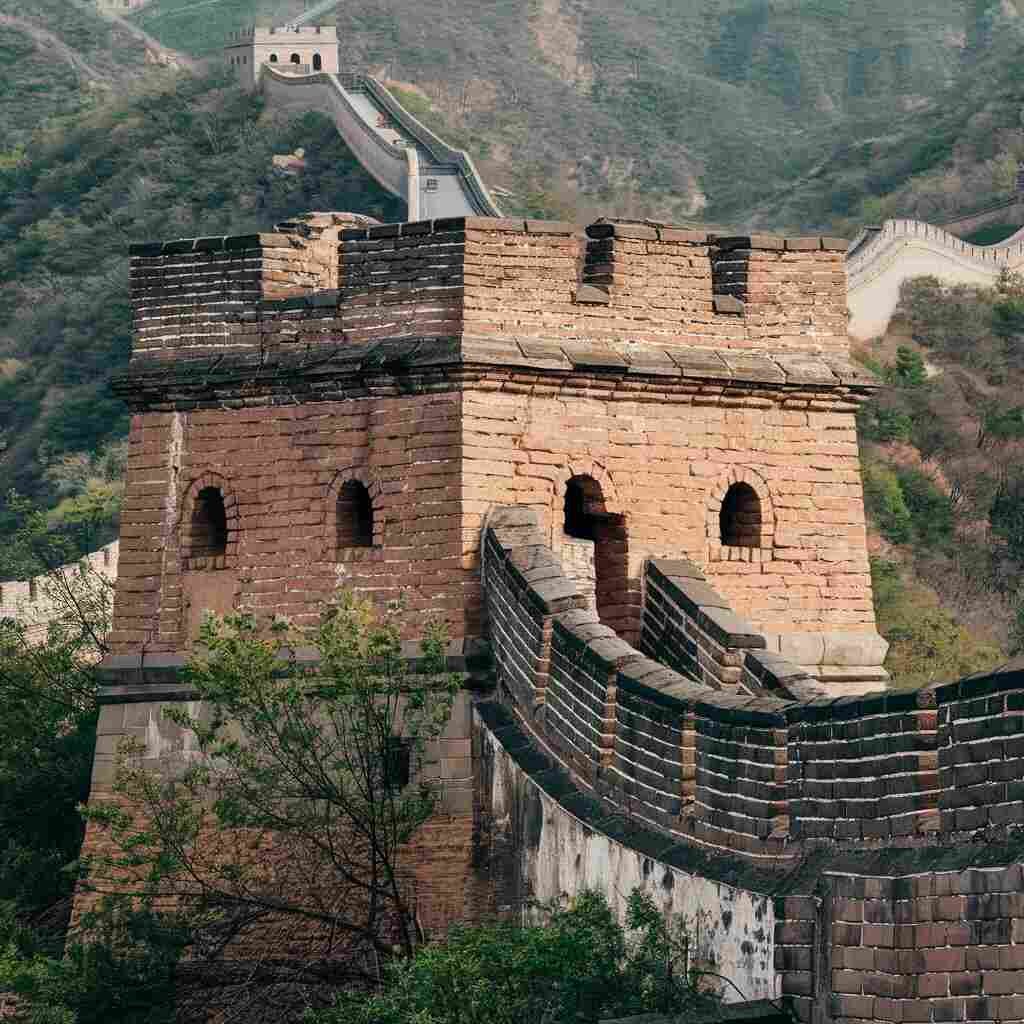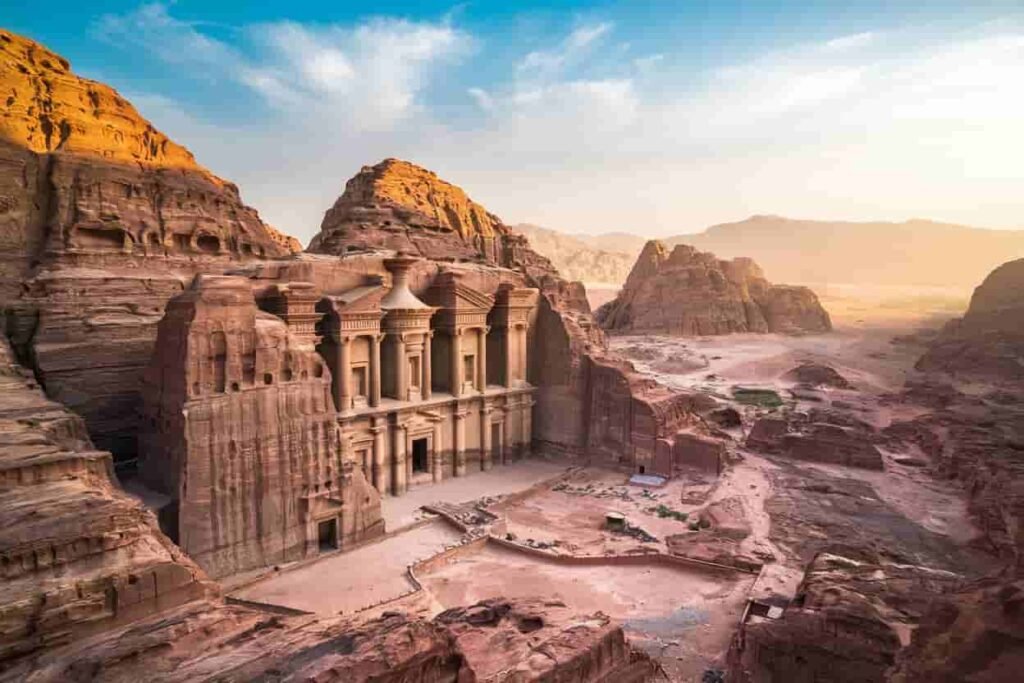The Great wall of China one of the most iconic landmarks in the world is a symbol of China ancient ingenuity and resilience. Stretching thousands of miles across vast landscapes the Great Wall is more than just a structure it a testament to the country rich history culture and architectural brilliance.
In this article, we will take an in-depth look at the Great Wall of China, exploring its history, construction, significance, and its status as one of the New Seven Wonders of the World. We’ll include a detailed table for easy reference, FAQs to address common queries, and conclude with why this wonder deserves a top spot on every traveler’s bucket list.
The Great Wall of China: An Overview
- Location: Northern China
- Length: Over 13,000 miles (21,196 kilometers)
- Construction Period: 7th century BC to the 17th century
- Purpose: Defense, border control, and trade regulation
- Materials: Earth, wood, bricks, and stone
- Key Feature: The world’s longest artificial structure
The Great Wall is actually a collection of defenses and walls constructed over many centuries by various dynasties rather than a single continuous wall.

A Brief History of the Great Wall
The Great Wall’s history spans over 2,300 years. Here’s an overview of its construction and development through various Chinese dynasties
1. Early Constructions (7th Century BC – 221 BC)
- The first walls built during the Warring States Period (475–221 BC) by different states to protect their lands. They mainly made of compacted earth and acted as defense barriers.
2. The Qin Dynasty (221–206 BC)
- Emperor Qin Shi Huang, who unified China is credited with connecting and expanding the existing walls. His efforts laid the foundation for what would later become the Great Wall.
- Soldiers, laborers and prisoners worked In harsh conditions.
3. The Han Dynasty (206 BC – 220 AD)
- The Han rulers extended the wall westward to protect trade along the Silk Road. This section was crucial for securing China economy and cultural exchange.
4. The Ming Dynasty (1368–1644)
- The most famous and well preserved sections of the Great Wall were built during the Ming Dynasty. They used bricks stones and tiles making the structure more durable and imposing.
- Watchtowers beacon towers and garrison stations were added to enhance its military functionality.
Key Features of the Great Wall
- Length and Scale
- The Great Wall stretches over 13,000 miles, crossing mountains, deserts, and plains.
- Strategic Importance
- The wall served as a military defense system, enabling troops to monitor enemy movements and communicate using smoke signals and beacons.
- Architectural Marvel
- The construction utilized a variety of materials including tamped earth wood and stone depending on the region availability of resources.
- Cultural Significance
- It is a representation of the nation’s enduring strength and the solidarity and resolve of the Chinese people.
Sections of the Great Wall Worth Visiting
The Great Wall spans across multiple provinces with some sections being more accessible and well preserved than others. Here are some popular sections
| Section | Location | Highlights | Difficulty |
|---|---|---|---|
| Badaling | Beijing | Most visited and tourist-friendly. | Easy |
| Mutianyu | Beijing | Scenic views with fewer crowds. | Moderate |
| Jinshanling | Beijing-Hebei Border | Beautiful but less restored, ideal for hikers. | Challenging |
| Simatai | Beijing | Features original, unrestored parts. | Moderate to Hard |
| Jiayuguan Pass | Gansu Province | Westernmost section; significant Silk Road site. | Easy |
Construction Techniques
Building the Great Wall was no easy feat, especially given the terrain and tools available at the time. Here are some key techniques used
- Rammed Earth Walls
- Early walls were constructed by pounding earth between wooden frames to create solid structures.
- Stone and Brickwork
- During the Ming Dynasty stones and bricks were introduced for greater durability. These materials allowed for more intricate designs, including battlements and drainage systems.
- Labor Force
- Millions of laborers including soldiers prisoners and farmers were forced to work on the wall. Many lost their lives during construction earning the wall the nickname. The Long Graveyard.
Why is the Great Wall of China Famous?
- Historical Significance
- The wall is a symbol of China’s ancient history and cultural heritage.
- Architectural Feat
- Its length and complexity make it one of the most ambitious construction projects in human history.
- Tourist Attraction
- As one of the New Seven Wonders of the World, it attracts millions of visitors annually.
- Cultural Symbolism
- The Great Wall represents unity, strength, and perseverance.
Comparison Table: Great Wall vs. Other Wonders
| Wonder | Unique Feature | Built | Key Materials | Length/Size |
|---|---|---|---|---|
| Great Wall of China | Longest artificial structure | 7th century BC – 17th century | Earth, brick, stone | 13,000+ miles |
| Petra | Rock-cut architecture | 312 BC | Sandstone | Entire ancient city |
| Taj Mahal | Marble mausoleum | 1632–1653 | White marble | 240 ft tall |
| Chichen Itza | Mayan astronomy and architecture | 600 AD | Limestone | Large temple pyramid |

FAQs About the Great Wall of China
2. How long does it take to walk the entire the Great Wall?
Walking the entire length would take several months, depending on conditions and your pace. Some sections are also inaccessible due to damage.
3. Why was the Great Wall built?
The wall was primarily built to protect China from invasions by nomadic tribes and to regulate trade and immigration.
4. Which is the best section of the Great Wall to visit?
The Badaling section is the most accessible and tourist-friendly, while Mutianyu offers stunning views with fewer crowds.
5. How was the Great Wall defended?
It featured watchtowers, beacon towers, and garrison stations, which allowed soldiers to monitor enemy movements and communicate effectively.
6. Is the entire wall intact today?
No many sections of the Great Wall have eroded over time due to natural and human causes. However, several key areas, especially those near Beijing, are well-preserved.
Conclusion
The Great Wall of China stands as a timeless symbol of human ingenuity, resilience, and determination. Stretching across mountains, deserts, and plains, it is a physical and cultural marvel that continues to inspire awe.
Visiting the Great Wall is more than just a journey to a historical site it is a chance to witness the grandeur of ancient engineering and immerse yourself in the rich tapestry of Chinese history. Whether you’re standing atop the well-preserved Badaling section or exploring the remote wilderness of Jiayuguan Pass, the Great Wall offers an unforgettable experience.




